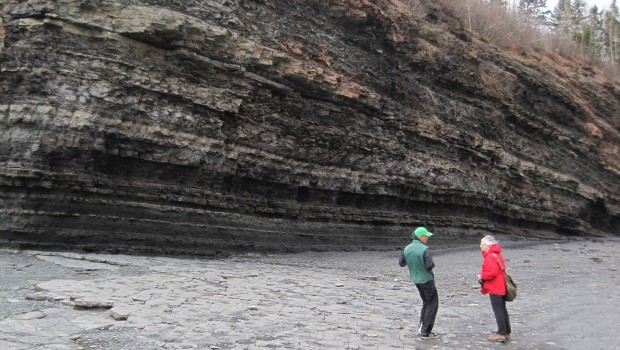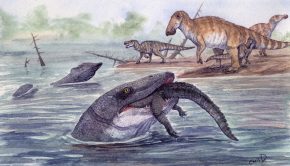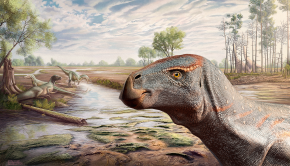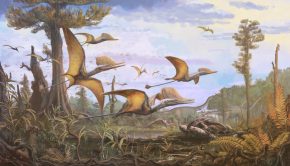Romer’s Gap Fossils
Romer’s Gap has always perplexed palaeontologists by the lack of fossils, specifically tetrapods that are found during this time when there is no reason for their absence. This week a new study introduced a number of fossils from Romer’s Gap of Nova Scotia, Canada. Lead author Jason Anderson had this to say about the study:
“Romer’s Gap refers to a missing bit of the fossil record between the very archaic Devonian tetrapods (basically fish with fingers) and the more classic Carboniferous tetrapods known from places like Greer in West Virginia. The latter tetrapods all have 5 fingers and toes (whereas the Devonian ones can have up to 6 and 8) and are more adapted to live out of the water. Those later lineages also link up with even more recent fossils and give us reasonable continuity leading to animals we have around today. Famed paleontologist Al Romer lamented this gap, since it was when he suspected all of the evolution between the one group to the other was taking place. Our new paper describes fossils from the oldest known site within this gap in the fossil record, approaching the Devonian-Carboniferous boundary. Although the fossils are disarticulated, in comparison with more complete fossils elsewhere (primarily similarly dated sites in Scotland) we find a diversity of tetrapods. Additionally, and quite surprisingly, we find an overlap of fossils more typical of both later Carboniferous and earlier Devonian faunas, suggesting that Romer’s Gap represents a failure to find and collect animals rather than any sort of failure of tetrapods to move onto land.”
http://journals.plos.org/plosone/article?id=10.1371/journal.pone.0125446
Images credit Jason Anderson
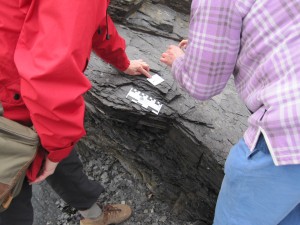
Jenny Clack and Tim Smithson taking a photo of an actinopt jaw at Blue Beach. Image credit: Jason Anderson

